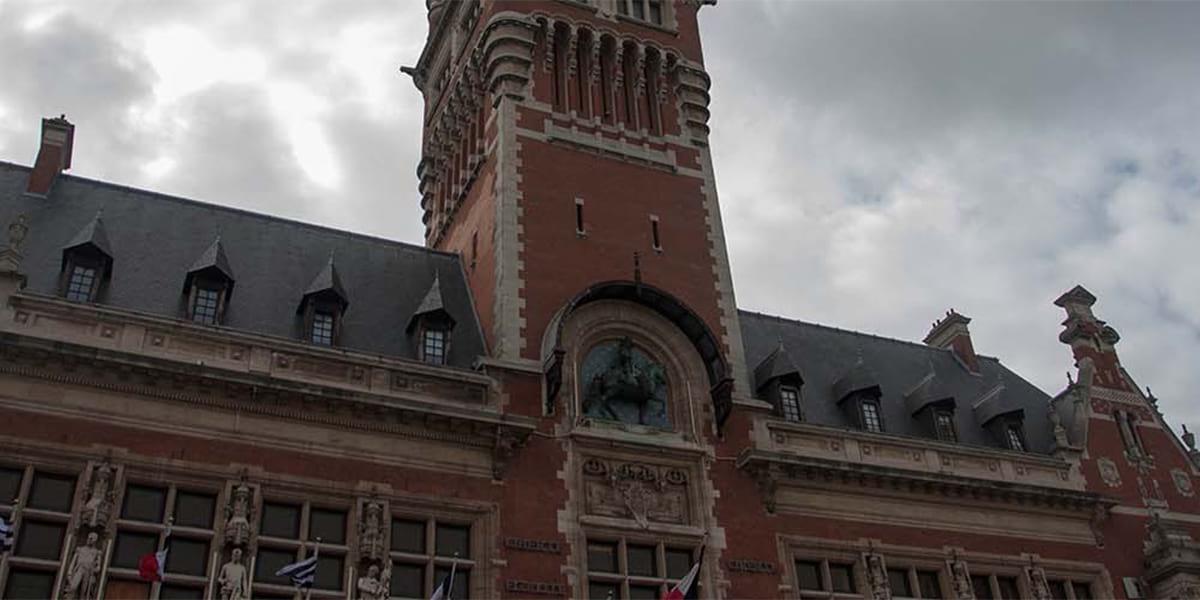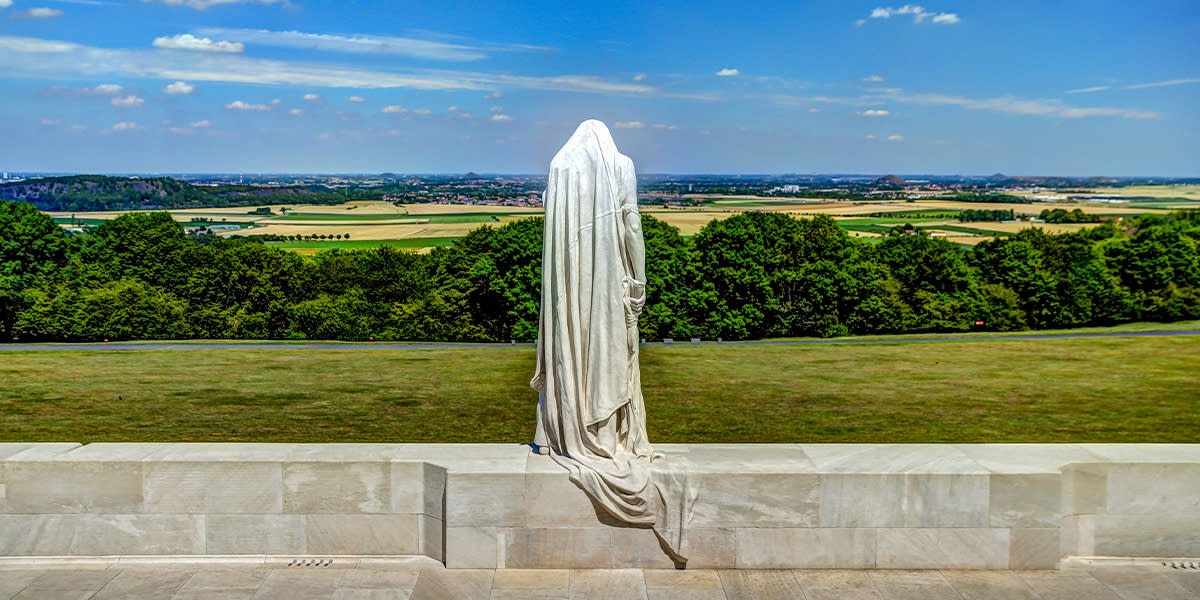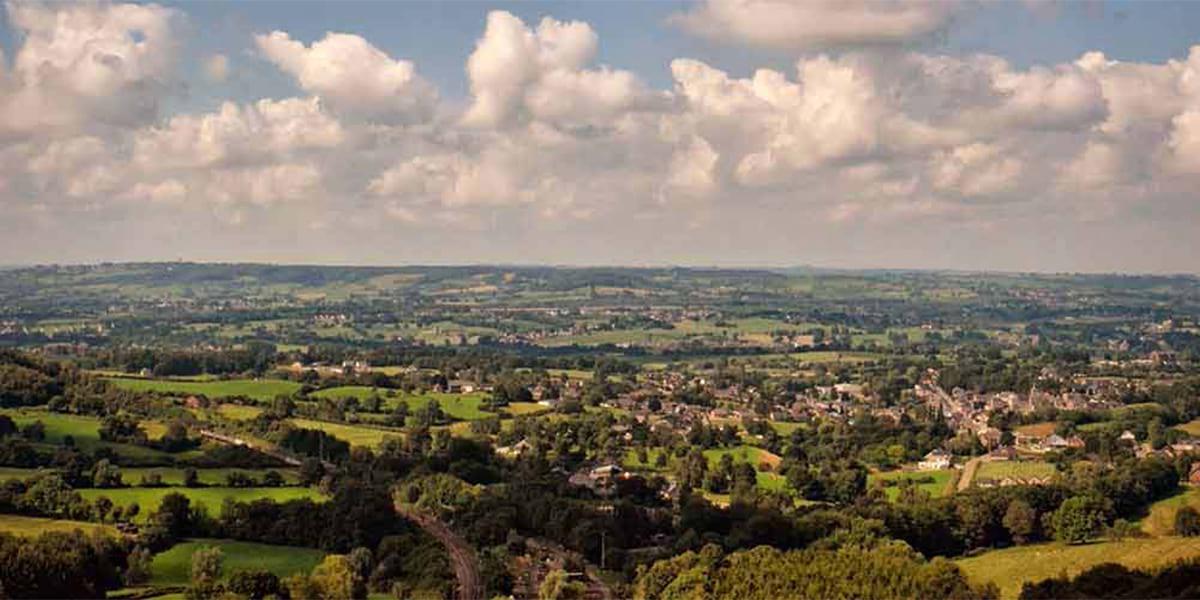
Battlefields in France

Visit the battlefields of France
Immerse yourself in history by visiting the battlefields of France. These historic sites have witnessed pivotal moments, from intense medieval skirmishes to the monumental World Wars of the 20th century. Spanning over 600 years, these landscapes narrate tales of bravery and sacrifice, with hundreds of thousands of lives lost on these grounds.
Today, many of these battlefields remain untouched, serving as open-air museums. Each site is scattered with memorials, war grave cemeteries, trenches, and museums that capture the essence of the past.
Located primarily in the north of France and along the Belgian border, these battlefields are most easily accessed by car ferries to Dunkirk, Calais, or Dieppe, offering convenient ferry routes to France. Alternatively, you can sail from Newcastle to IJmuiden and drive from there. Taking your car not only simplifies travel but also provides flexibility when visiting rural areas, which can be challenging to reach via public transport. Discover some of the key sites we recommend visiting below.

Agincourt
Agincourt is situated 12 miles north-west of Saint-Pol-sur-Ternoise in the Pas-de-Calais department of northern France. In 1415 the Battle of Agincourt saw 5,900 British longbowmen and knights led by King Henry V defeat a French army said to be more than four times its size.
Agincourt is probably the most richly documented of all medieval battles, but nothing beats visiting the battlefield itself.
If you head to the battlefield museum first, you can enjoy the interactive exhibits and videos, as well as relics that were recovered from the site. The museum will also supply you with a map and point you in the right direction of the battlefield, where you will find a monument and a guide to the battle, as well as fantastic views across the fields where the battle took place over 600 years ago.

The Battle of the Somme
The Battle of the Somme took place between 1 July and 18 November 1916 on both sides of the River Somme. It was the largest battle of the First World War on the Western Front, and was fought by the armies of the British and French empires against the German empire. More than one million men were wounded or killed there, making the Somme one of the bloodiest battles in human history.
Because the battlefield is so vast and there are so many cemeteries, museums and memorials in the area it is advisable to set aside a few days to make the most of your experience. The most popular places to visit are the battlefield at Gommecourt and the battlefield around the Sheffield Memorial Park. Other highlights include the famous Sunken Lane at Beaumont Hamel where the 1st Lancashire Fusiliers made their advance; Hawthorn Ridge Cemetery and the battlefield at Thiepval.

Verdun
The Battle of Verdun, fought on the hills north of Verdun-sur-Meuse in north-eastern France between 21 February to 18 December 1916, was one of the largest and longest battles of the First World War.
The area around the battle site is rich in military history and you can explore forts, underground tunnels, gun positions, trenches and museums.
Key locations include Fort Douaumont, Fort Vaux and the huge Douaumont Ossuary, a cemetery that houses the bones of 130,000 unidentified soldiers.
You can also visit the newly refurbished Fleury Memorial Museum and the Voie Sacree, the Trench of Bayonets, Verdun Citadelle and the Froideterre fortifications.

Dunkirk
Dunkirk is on the coast of northern France and is just six miles from the Belgian border. During the Second World War the German Army trapped British and French soldiers on the beaches around Dunkirk. In response, the British Army formulated Operation Dynamo to get as many men as possible off the beaches, and from May 26 1940, small ships transferred soldiers to larger ones, which then brought them back to safety in southern Britain. In the end 330,000 allied troops were rescued.
Start off your trip to Dunkirk by visiting Bray Dunes where it’s still possible to see shipwrecks of Operation Dynamo. Then take a trip to the Dunkirk Commonwealth War Grave Cemetery where many of those killed in the battle are buried. You should also explore the museum at Dunkirk with some interesting artefacts, photos and maps. Before you leave, visit Cassel, little hilltop town with panoramic views of the Dunkirk beaches.

Flanders Fields
Flanders Fields, located in the Flemish region of Belgium, is one of the most iconic WW1 battlefields in Europe. This location witnessed some of the bloodiest battles during the conflict, including the Battle of Ypres. Today, it serves as a poignant reminder of the devastating impact of war. The landscape, once scarred by trenches and explosions, has healed over time, but the numerous cemeteries and memorials dotted across the fields stand as lasting tributes to the lives lost. One of the most famous is the Menin Gate Memorial in Ypres, which bears the names of more than 54,000 soldiers who perished in the battle but have no known grave.

The Battle of Vimy Ridge & Battle of Arras
The Battle of Vimy Ridge and the Battle of Arras are two significant WW1 battles that took place in France. The Battle of Vimy Ridge, fought in April 1917, is often cited as a defining moment for Canada, as all four divisions of the Canadian Corps fought together for the first time and successfully captured the ridge from the German army.
The Battle of Arras, fought in April and May of the same year, was a British offensive that resulted in some of the highest casualties of the war. Today, the Vimy Ridge National Historic Site of Canada and the Arras Memorial serve as lasting reminders of these battles, honouring the memory of the soldiers who fought and died there.

Siege of Meaux
The Siege of Meaux occurred during the Hundred Years' War in 1422. It was one of the final battles of the war and marked the culmination of England's successful campaign in northern France. The English king, Henry V, led his troops to victory against the French, but he fell ill during the siege and died a few months later.
Today, the town of Meaux offers a rich tapestry of history for visitors to explore, including the Museum of the Great War which provides an in-depth look at the First World War. The Siege of Meaux is commemorated in the town's historical narrative, and its impact on the course of English and French history is still recognized today.

Dieppe War Memorial and Canadian War Cemetery
The Dieppe War Memorial and Canadian War Cemetery honour and mark the sacrifices made during the tragic Dieppe Raid of World War II. This disastrous Allied offensive on the German-occupied port of Dieppe, located in Normandy, resulted in significant losses, marking a sombre chapter in Canadian military history.
The memorial at Square du Canada and the nearby cemetery bear testament to the bravery of those involved, holding plaques and graves of the fallen. These sites, easily reached via our Newhaven-Dieppe ferry route, offer visitors a chance to reflect on history while enjoying the peaceful landscapes that have since arisen from the wartime turmoil.










